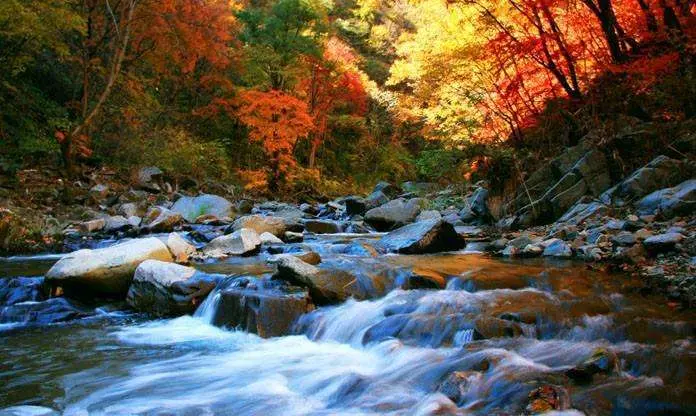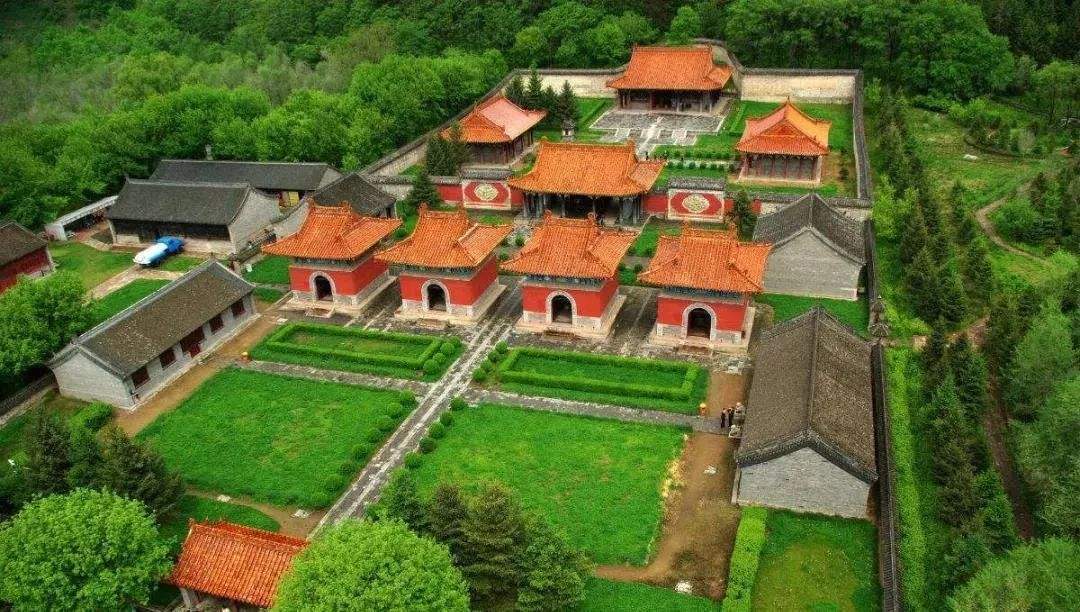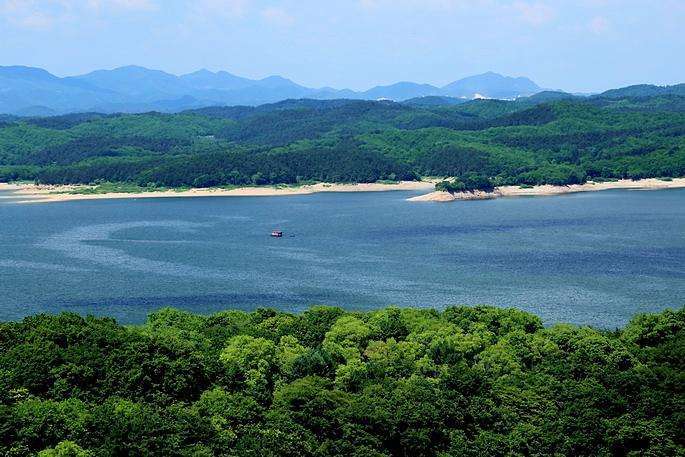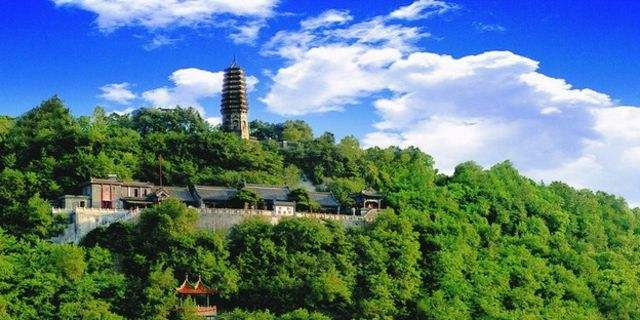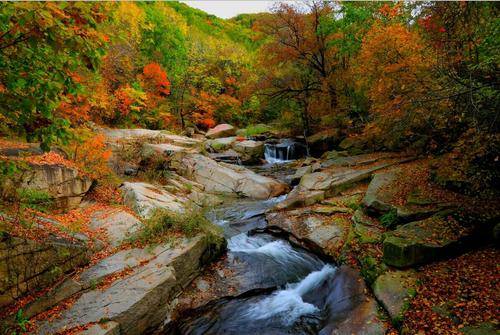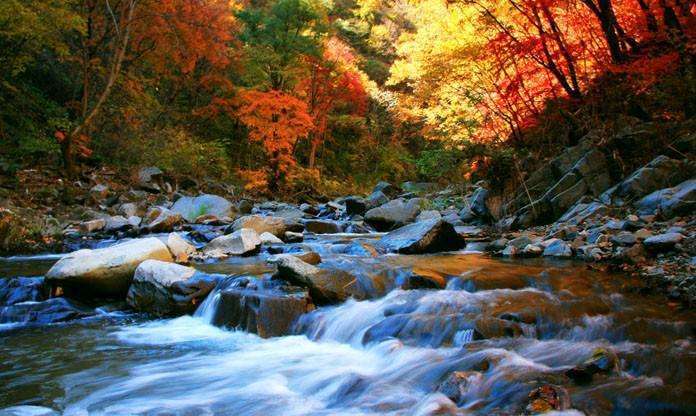Qing Yongling Mausoleum is located at the foot of Qiyun Mountain in Yongling Town, Xinbin Manchu Autonomous County. It is the mausoleum of Nurhaci's distant ancestors, great-grandfather, grandfather, father, uncle, and great-uncle. It was first built in 1598 and was called Xingjing Mausoleum in the eighth year of the Tiancong era of the Qing Dynasty (1634). Yongling was constructed over eighty years, from 1598 to 1677. Initially, it only housed the clothing and crown of Nurhaci's sixth-generation ancestor, Mengtemu, and the remains of his great-grandfather, Fuman. During the Shunzhi era, the burial site was named Xingjing Mausoleum, and the mausoleum mountain was named Qiyun Mountain. Later, the remains of Nurhaci's grandfather, Juechang'an, father, Taksi, and relatives Lidun and Tachapian were moved here from the Tokyo Mausoleum in Liaoyang. In the sixteenth year of the Shunzhi era (1659), it was renamed Yongling. The main entrance on the south side is the Zhenghong Gate, which has three bays, a hard mountain style, a yellow glazed tile roof, a main ridge with a kiss, and a beast on the eaves. Inside the gate, there are four pavilions, each with a tall stone stele commemorating the four ancestors who founded the Qing Dynasty: 'Emperor Zhaozu' (Mengtemu), 'Emperor Xingzu' (Fuman), 'Emperor Jingzu' (Juechang'an), and 'Emperor Xianzu' (Taksi). The steles are inscribed with eulogies such as 'Inheriting the Family and Founding the Nation' in Manchu, Mongolian, and Chinese. On the east and west sides of the pavilions, there were originally buildings such as the Blessing Room, the Qiban Room, the Tea Room, and the Washing Room. North of the pavilions is the Fangcheng, with the Qiyun Gate in the center of the south wall. The main ridge has double kisses and six dragons playing with pearls, and the brick-carved yellow dragons are in the center of the screen walls on both sides of the gate.
Sarhu Scenic Area
This scenic area is located at No. 6, South Sarhu Road, Xintaihe Street, Dongzhou District, Fushun City. It was originally the 'Dahuofang Reservoir' and is 15 kilometers away from the city center. The Sarhu Scenic Area features green mountains, clear waters, ancient caves, and unique rocks. It combines the tranquil lake scenery with the mountainous landscape of peaks and valleys, and also has rich historical and cultural connotations from the Ming and Qing dynasties. It is a large natural and cultural landscape in eastern Liaoning, known as the 'Scenic Pearl of Liaoning.' Centered around the Dahuofang Reservoir, the Sarhu Scenic Area includes eight tourist areas: Bailong Mountain, Wanggao Mountain, Deguwan, Lotus Island, Yingpan Three Islands, Marshal Forest, Tiebei Mountain, and Sarhu Mountain. The scenery is beautiful, the air is fresh, and the four seasons offer diverse landscapes. Whether driving on land, walking in the forest, or flying over the sea, you will feel comfortable.
Gaoshan Park is located on Gaoshan Road in Shuncheng District, Fushun City, situated on the northern Gaoshan Mountain of Fushun City, covering an area of 240 hectares. The park's terrain is varied, with an elevation ranging from 80 to 230 meters. 'The mountain reaches the heavens, offering a panoramic view of a thousand miles. The gate is halfway up the mountain, no need to climb further.' From Gaoshan Mountain, one can enjoy a panoramic view of the entire city. Gaoshan Park is a provincial-level cultural relic protection unit. Within the park, there is an ancient octagonal nine-tiered pagoda from the Liao Dynasty, over 900 years old, the ancient Guanyin Pavilion from the Qing Dynasty, and scenic spots such as Tumen Diecui, Songlin Xingyu, Wanshan Chaota, and Dengdai Liudan. Additionally, there are classical royal garden buildings such as Suoyang Huaiyin, Suoyang Tower, side halls, octagonal pavilions, pentagonal pavilions, and long corridors.
Sankuaishi National Forest Park
Sankuaishi National Forest Park is located in Hou'an Town, 52 kilometers southeast of Fushun, on the southern foothills of the Laolonggang remnants of the Changbai Mountains. The park covers an area of 100 square kilometers, with the main peak at an altitude of 1131 meters. It is named after three giant stones at the mountain's peak that stand together and reach into the clouds. Sankuaishi National Forest Park combines grandeur, danger, uniqueness, steepness, elegance, seclusion, and clarity. It has a high forest coverage rate, and its main attractions include the majestic Sankuaishi, the steep Xianrentai, the flying Bailongtan Waterfall, the pure Tianyu Magnolia, and the magical Pigeon Cave. This area also served as a revolutionary base during the Anti-Japanese and Liberation Wars.
Kuangzigou Ecological Scenic Area
Kuangzigou Ecological Scenic Area is located along the provincial road Zhanghuan Line in Gounaidian Township, Qingyuan Manchu Autonomous County, Fushun City. It has a superior geographical location and convenient transportation. The scenic area covers an area of 85 square kilometers, with a forest coverage rate of 95% and an annual water accumulation of 10 million cubic meters. The content of negative oxygen ions in the air is very high, making it very fresh. The weather is pleasant, especially cool in summer, making it suitable for summer travel.
